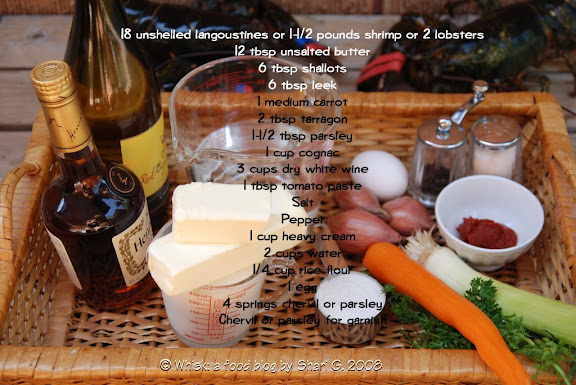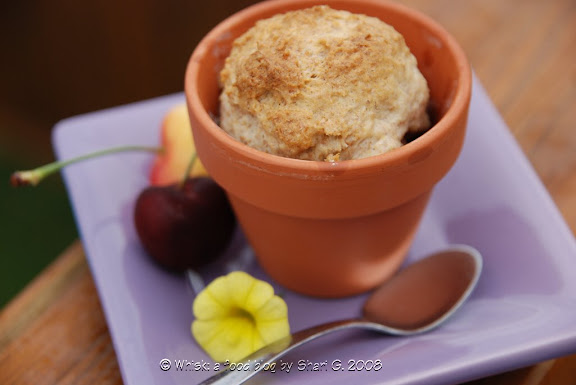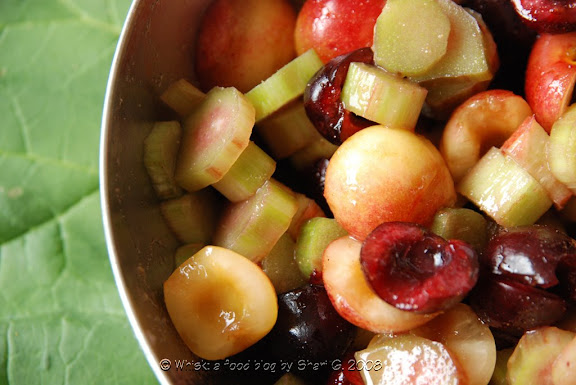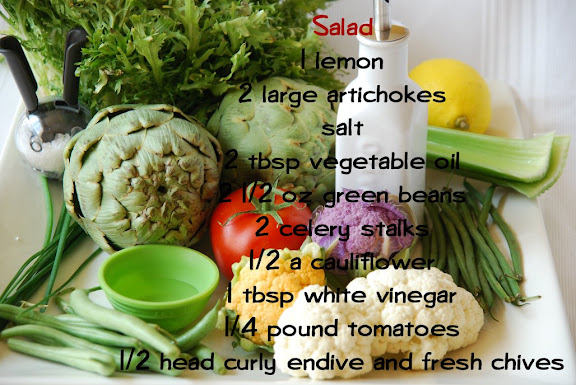Bisque de Homard (Lobster Bisque) – A Luxurious French Soup

Bisque de Homard, or Lobster Bisque, is a once-in-a-lifetime soup. At $16 per bowl and $97 for a tureen, the word “soup” seems too simple and unworthy a description. Technically, it’s a bisque, but it needs a name deserving of its expense and grandeur. So you know what you’re getting into. So you’re prepared to savor every sip. So you’re prepared to slave in the kitchen for a whole day!
A bisque is a thick, creamy soup, traditionally made with seafood, such as lobster, crab, langoustine, shrimp, or crayfish. Unlike a chowder, it doesn’t contain any potatoes. Recipes for bisque in the 18th century included the ground shells of the seafood to thicken the soup. In this recipe, the shells are used to flavour the broth, but then strained out.
The lobster “You’re not going to use live lobster, are you?” {dad}
“You’re not going to use live lobster, are you?” {dad}
“I don’t want to be here for the execution!” {sister}
“Isn’t that torture?” {nephew}
“Did they scream?” {mom}First, the lobster. At $15.99 Canadian per pound {flown in from Nova Scotia to the prairies}, these two little innocent homards set me back $65. Boxed up and on ice, they came home with me twitching their antennae and looking uncomfortable.
After seeing what was in my cardboard box, my nephew looked at me curiously, possibly wondering if I’d decided to bring home a new pet. When I told him why there was a pot of water bubbling and boiling on the stove, he again looked at me with his big, blue eyes and said, “Isn’t that torture?” Oh, this wasn’t going to be easy. I took a deep breath, avoided the question, and picked up the smaller of the two, quickly squeezing it into the not-so-big stock pot and held the lid on tight (so it wouldn’t escape?!).
After a steam bath of only two minutes, it was bright pink and ready to be cracked, arched, pulled, separated, and unhinged all in an effort to get the meat from the exoskeleton! I had lobster juice in my hair, on my nose, and even on my big toe!
In the middle of this dismemberment, my daughter walked in and asked what I was doing. Not wanting to spoil her dinner by having her view the gross green goo from the stomach that I was trying to get rid of, I quickly said “Oh, nothing. Why don’t you go play outside.” I failed. She saw it, and she’ll probably never eat lobster!
Finally, the meat extraction was done. I pulled out my mom’s 37-year-old Weight Watchers scale & bowl with its crooked red indicator arrow hoping I would have ¾ of a pound of lobster meat. 5 ounces! That’s it. That’s all. I thought about sucking the meat out of the small legs, but decided to hope for the best from lobster #2. The second lobster didn’t fare much better, but I went ahead with the 12 ounces total that I got from these two beasts.
Watch a pro clean a lobsterHere’s a great
video showing how to get the meat out of the lobster, one of the hardest parts of this recipe.
I found this placemat handy that my mom got when they visited Prince Edward Island and attended a Lobsterfest.
 The cognac
The cognacAfter dealing with the lobster, you cook the aromatics (shallots, leek, carrot, tarragon, and parsley with some butter) along with the choice shells from the lobster for extra flavor. Next, you flambé the lot with 1 cup of Cognac!

According to the French, Cognac is made from eaux-de-vie, which literally means "waters of life". This strikes me as ironic after moments ago killing the lobster!

Cognac is a brandy named after the town of Cognac in France. At the local “liquor board store”, I was able to find Hennessey, which is a prominent French winery that specializes in making cognac. After pouring this liquid gold into the pot, I lit it on fire. Everyone quickly took pictures. We watched. We waited. I had to hold my dad back from plopping the lid on top to put the fire out. Finally, after 5 minutes, the fire finally died out!
If that wasn’t enough alcohol, you then add a bottle of white wine. Finish it off with some tomato paste, salt, pepper, cream, and water. And let it bubble away for a while. After straining it, I had to add some water to bring it up to 6 cups. This seemed a shame, as I thought it would dilute the taste, but it didn’t.
The meatloafWhile the bisque bubbled and with the lobster meat extracted, I was ready to make the meatloaf…I mean “mousseline”. That has a much nicer ring to it, don’t you think?
A bit of a purée in the food processor, a dash of salt and pepper, a drizzle of foamy egg white, a touch of cream, and a sprinkle of chervil. {Chervil has been playing hard to get with me. I’ve looked in every grocery store I go to. Finally, in the small prairie city of Regina, Saskatchewan, I find a lonely bag of chervil on the shelf. “Doesn’t have much taste”, my sister says. She’s right! It looks pretty, though!}
I shaped the puréed meat into footballs, or "quenelles" as they're called, {easier to do with your fingers than the two-spoon method}, and poached them in some of the expensive broth {I would use water next time to save the broth for mouths rather than frying pans} with a buttered parchment paper circle as a lid. Ten minutes later, the lobster meatloaf was ready to garnish the bisque.
The thickenerFinally, to thicken the bisque, you use rice flour and butter to make a roux. {I don’t know why rice flour is used instead of all-purpose.} After slowly adding the broth to the roux, it simmers again to develop even more flavor.
To finish the bisque, you add a liaison of cream and eggs. This time, the cookbook says to bring it all to a boil AFTER adding the liaison. I did not want any curdling action since I'd spent all afternoon and so much money on this soup! I heated it to a suitable serving temperature, and bingo, presto….finally the bisque was done.
Like the
Cream of Chicken Soup, this bisque wasn’t thick or viscous. It was creamy, though.
Recipe: Bisque de Homard (Lobster Bisque)

You can find the recipe for Bisque de Langoustins (Langoustine Bisque) {I substituted lobster for langoustines} in the book
Le
Cordon Bleu at Home (affiliate link). To see how the rest of the Whisk Wednesdays group fared with this week's recipe, click
here (or check out the sidebar) and then click on each blogger!
 Tasting Notes“This is the most expensive soup I’ve ever made!” {me}
Tasting Notes“This is the most expensive soup I’ve ever made!” {me}
“This is the best soup I’ve ever tasted.” {sister and mom}
“What a lot of dishes!” {dad}This soup had a rich, creamy flavor that was smooth and pleasing to the palate. The quenelles that floated on top of the soup provided a different texture and satisfying bite of lobster meat.
A dollar for every sip. Was it worth it?
“A bargain at thrice the price~!” says my mom. {But she’s my mom.} Next time, I’ll use shrimp.
.jpg) Next Week (August 6)
Next Week (August 6)• Consommé Madrilène (Chilled Consommé with Red Peppers and Tomatoes) pages 267-268
. . . . . . . . . .
Running total: $506.28 + $97.96 ($16.33 per serving!) = $604.24
Butter used so far: 6 pounds, 26 tablespoons
. . . . . . . . . .
Just a note that I'm away for a couple days at a cottage without internet (yikes), so I may not get around to everyone's blogs in the next few days. I promise to catch up when I get back.
 I'm home on the prairie and enjoying the big, expansive blue sky and the field grasses. I wish there were more hours in the day to do everything I want to do {online}, but I've been enjoying a good book, sitting by the beach, watching the kids play in the water, and catching up with everyone. While I've been visiting family and friends, the food blogging community continues to inspire me.
I'm home on the prairie and enjoying the big, expansive blue sky and the field grasses. I wish there were more hours in the day to do everything I want to do {online}, but I've been enjoying a good book, sitting by the beach, watching the kids play in the water, and catching up with everyone. While I've been visiting family and friends, the food blogging community continues to inspire me. Chriesi from Almond Corner, who is a blogger I admire and check regularly to see what’s cookin’ in her kitchen, has given me the Kreativ Blogger award. I’m honored to get an award from a blogger I so respect and admire. The originator of the Kreative Award is a very talented Danish woman named, Hulda Verden.
Chriesi from Almond Corner, who is a blogger I admire and check regularly to see what’s cookin’ in her kitchen, has given me the Kreativ Blogger award. I’m honored to get an award from a blogger I so respect and admire. The originator of the Kreative Award is a very talented Danish woman named, Hulda Verden.








.jpg)
.jpg)







.jpg)

.jpg)




.jpg)






.jpg)


.jpg)

.jpg)
.jpg)


.jpg)












